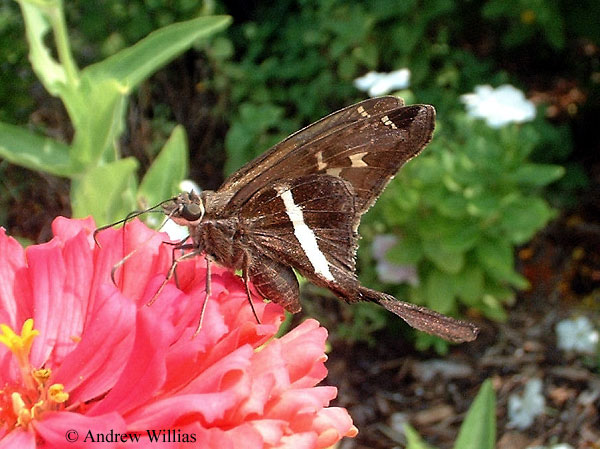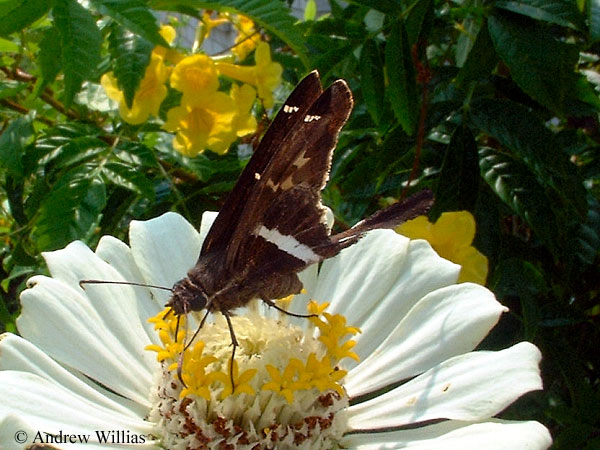 |
White-striped Longtail Skipper – Chioides catillus Live adult butterflies photographed at Corpus Christi, TX Family: Hesperiidae (Skippers) Butterfly Main | Skippers | Butterfly Index |

|
White-striped Longtails, like many of the larger subtropical skippers, wander far north of their permanent range. Many lay eggs on these jaunts, but the butterflies remain resident only where warm weather permits; they survive winters only in South Texas and southward. Similar species: Zilpa Longtail has white spot near tail, but lacks diagonal white band. Life Cycle: Eggs are white, becoming yellowish with age. Newly hatched caterpillars are dull green, but mature to rose-colored with orange stripes on the sides. Chrysalis is dark brown with waxy white bloom. Host plants include many legumes, Mimosa, and beans. |

| All adult true skippers have six well developed legs. Their eggs are tiny, usually less than .1mm. Most skipper caterpillars are green and tapered, and the neck appears constricted. The caterpillars weave silk and leaves into a daytime shelter for protection. Most pupate in loosely woven cocoons. The chrysalises are often coated with a powder or bloom. Chrysalis and caterpillars may overwinter.
Skipper butterflies can be divided into five subfamilies:
|
 |
Order Lepidoptera, which contains both butterflies and moths, includes at least 125,000 known species including 12,000 in North America. Butterflies are revered for their brightly colored wings and pleasing association with fair weather and flowers. |
